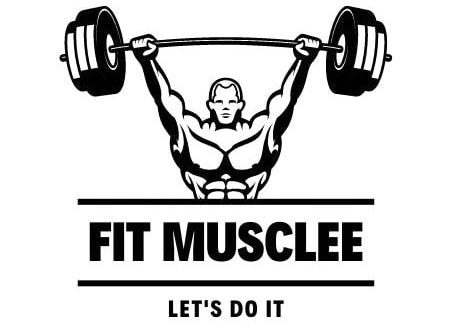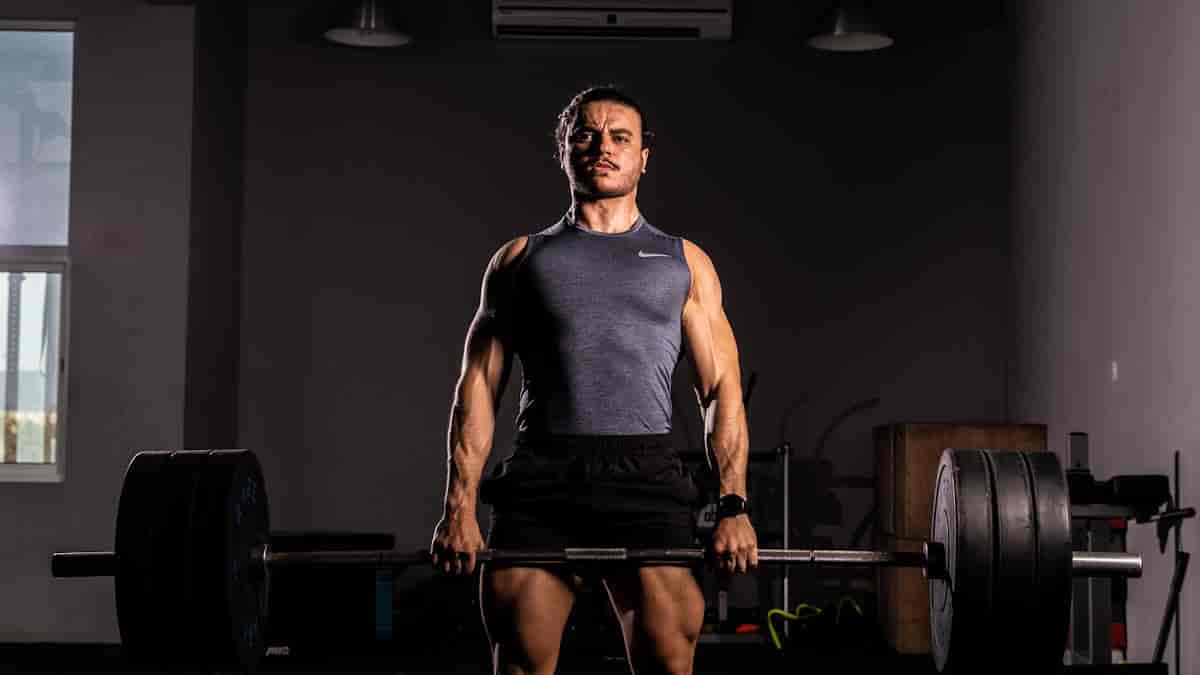Here is your complete guide to hamstrings sore after deadlifts.
Introduction to Hamstrings Sore After Deadlifts
Deadlifts are a cornerstone of strength training, renowned for their ability to build muscle and enhance overall athletic performance. However, many lifters experience hamstrings sore after deadlifts, which can be a common yet concerning occurrence. In this article, we will explore the reasons behind this soreness, how to assess its severity, effective recovery strategies, and ways to prevent future discomfort.
Understanding Hamstring Anatomy and Function
Before diving into the causes of soreness, it’s essential to understand the anatomy and function of the hamstrings:
- Hamstring Muscles: The hamstrings consist of three primary muscles:
- Biceps Femoris: This muscle has two heads (long and short) and is located on the outer part of the thigh.
- Semitendinosus: Positioned in the middle of the thigh, this muscle assists in bending the knee and extending the hip.
- Semimembranosus: Located underneath the semitendinosus, it also aids in knee flexion and hip extension.
- Role in Deadlifts: The hamstrings play a crucial role in deadlifting by:
- Assisting in hip extension as you lift the weight.
- Stabilizing the knee joint during the movement.
- Contributing to overall power and control throughout the lift.
Understanding these functions helps clarify why you might feel soreness in your hamstrings after performing deadlifts.
Why Are Hamstrings Sore After Deadlifts?
Delayed Onset Muscle Soreness (DOMS)
One of the primary reasons for hamstrings sore after deadlifts is Delayed Onset Muscle Soreness (DOMS).
- Definition: DOMS is a type of muscle pain that occurs after intense exercise, particularly when you engage in unfamiliar or strenuous activities.
- Timeline:
- Onset typically occurs 24-48 hours post-exercise.
- The soreness can last up to a week but usually subsides as your muscles adapt.
How DOMS Relates to Muscle Adaptation
- Muscle Growth: Soreness is often a sign that your muscles are adapting and growing stronger. When you lift weights, tiny tears occur in muscle fibers, leading to inflammation and soreness as they repair.
- Adaptation Process: Over time, as your body becomes accustomed to deadlifting, you may experience less soreness after workouts.
Fatigue from Deadlift Variations: Hamstrings Sore After Deadlifts
Different types of deadlifts can impact how fatigued your hamstrings feel:
| Deadlift Type | Hamstring Engagement | Risk of Injury | Recommended Warm-up |
|---|---|---|---|
| Conventional | High | Moderate | Dynamic stretches |
| Sumo | Moderate | Low | Light cardio |
| Romanian | Very High | High | Specific muscle activation |
- Conventional Deadlift: Engages hamstrings significantly due to the hip hinge movement.
- Sumo Deadlift: Places more emphasis on inner thigh muscles but still requires hamstring activation.
- Romanian Deadlift: Primarily targets hamstrings; thus, it can lead to greater fatigue and soreness.
Potential Injuries of Hamstrings Sore After Deadlifts
While soreness is common, it’s crucial to differentiate between normal discomfort and potential injury:
- Signs of Injury:
- Sharp or intense pain during or after lifting.
- Swelling or bruising around the hamstring area.
- Difficulty walking or using the leg normally.
If you experience these symptoms, it may indicate a strain or other injury rather than typical post-workout soreness.
Assessing Your Soreness
Understanding whether your soreness is normal or indicative of an injury is vital. Here are some self-assessment techniques:
Pain Scale Evaluation
- Rate your pain on a scale from 1 to 10:
- 1-3: Mild soreness; likely normal.
- 4-6: Moderate discomfort; monitor closely.
- 7-10: Severe pain; consider resting and consulting a professional.
Range of Motion Tests
Perform gentle movements to assess your flexibility and pain levels:
- Knee Flexion Test: Bend your knee while standing. If pain occurs behind your thigh, it may indicate strain.
- Hip Extension Test: Stand straight and extend one leg back. If you feel sharp pain in your hamstring, it’s worth consulting a healthcare provider.
What to Do If Your Hamstrings Sore After Deadlifts
If you find yourself dealing with hamstrings sore after deadlifts, here are some effective recovery strategies:
Immediate Recovery Strategies
Implementing immediate recovery techniques can help alleviate soreness:
- Rest: Allow your muscles time to recover by taking a break from intense workouts.
- Ice Therapy: Apply ice packs wrapped in cloth for 15-20 minutes every few hours to reduce inflammation.
- Compression: Use compression sleeves or bandages to support blood flow and reduce swelling.
- Elevation: Keep your legs elevated while resting to minimize swelling.
Active Recovery Techniques
Engaging in light activities can promote blood flow and aid recovery:
- Gentle Stretching Exercises for Hamstrings
- Standing Hamstring Stretch
- Seated Forward Bend
- Lying Hamstring Stretch
- Light Activities
- Walking or cycling at a low intensity can help maintain circulation without overexerting your muscles.
Strengthening Exercises
Once soreness subsides, consider incorporating strengthening exercises into your routine:
| Exercise | Description | Benefits |
|---|---|---|
| Nordic Hamstring Exercise | Kneeling with feet anchored; lower body forward while maintaining straight posture. | Builds eccentric strength in hamstrings. |
| Single-leg Romanian Deadlift | Balance on one leg while lowering weights with the opposite hand toward the ground. | Improves stability and targets hamstrings. |
| Straight Leg Raises | Lying flat; lift one leg straight up while keeping the other leg on the ground. | Strengthens hamstrings without strain. |
These exercises will help build resilience in your hamstrings, reducing future soreness.
Preventing Future Soreness and Injury
To minimize the risk of experiencing hamstrings sore after deadlifts again, consider these prevention strategies:
Proper Warm-up Routines
Warming up prepares your body for exercise by increasing blood flow to muscles:
- Dynamic Stretches:
- Leg swings
- Walking lunges
- High knees
Incorporate at least 10 minutes of dynamic warm-ups before lifting weights.
Techniques to Improve Form
Proper form during deadlifting is critical for preventing injuries:
- Maintain a neutral spine throughout the lift.
- Keep weights close to your body as you lift.
- Engage your core for stability.
Consider working with a trainer if you’re unsure about your form.
Incorporating Flexibility Training
Flexibility training enhances muscle elasticity and reduces tightness:
- Include static stretching sessions post-workout focusing on hamstrings and surrounding muscles.
- Consider yoga or Pilates classes that emphasize flexibility and core strength.
Common Mistakes to Avoid When Hamstrings Are Sore After Deadlifts
Experiencing hamstrings sore after deadlifts is a common issue among lifters, but it’s essential to recognize and avoid certain mistakes that can exacerbate this soreness or lead to injury. Below are some of the most frequent errors and how to correct them.
1. Ignoring Proper Warm-Up
One of the most significant mistakes is skipping the warm-up. A proper warm-up prepares your muscles for the demands of deadlifting and can help reduce soreness.
- Dynamic Warm-Up: Incorporate dynamic stretches such as leg swings and hip hinges.
- Light Sets: Perform a few sets with lighter weights before moving to your working sets.
2. Poor Deadlift Form
Incorrect form is a leading cause of excessive soreness and potential injury. Here are key aspects to focus on:
- Rounded Back: Lifting with a rounded back can strain your hamstrings and lower back.
- Solution: Maintain a neutral spine by engaging your lats and keeping your chest up.
- Bar Positioning: Starting with the bar too far away can lead to poor lifting mechanics.
- Solution: Keep the bar close to your shins throughout the lift to engage your hamstrings effectively.
| Mistake | Consequence | Correction |
|---|---|---|
| Ignoring warm-up | Increased risk of injury and soreness | Always perform a dynamic warm-up |
| Rounded back | Strain on hamstrings and lower back | Maintain a neutral spine |
| Bar too far from shins | Poor lifting mechanics, increased strain | Keep bar close to shins |
3. Overloading Weights Too Quickly
Progressing too quickly in weight can overwhelm your muscles, leading to excessive soreness or injury.
- Gradual Increase: Follow the principle of progressive overload by increasing weights slowly.
- Volume Management: Instead of heavy sets, consider doing more sets with fewer reps to manage fatigue better.
4. Neglecting Recovery
Failing to prioritize recovery can prolong soreness and hinder performance.
- Active Recovery: Engage in light activities like walking or gentle stretching on rest days.
- Post-Workout Care: Implement techniques like foam rolling and static stretching after workouts.
| Recovery Strategy | Benefits |
|---|---|
| Active recovery | Promotes blood flow and reduces stiffness |
| Foam rolling | Alleviates muscle tightness |
| Static stretching | Improves flexibility and reduces soreness |
5. Not Listening to Your Body
Ignoring signs of pain can lead to more severe injuries. It’s crucial to distinguish between normal soreness and pain that indicates an injury.
- Pain vs. Soreness: Understand that while some soreness is normal, sharp or acute pain should not be ignored.
- Consult a Professional: If you experience persistent pain, consider seeking advice from a healthcare provider or physical therapist.
FAQs about Hamstrings Sore After Deadlifts
Here are some frequently asked questions regarding hamstrings sore after deadlifts:
Is it normal for my hamstrings to be sore after deadlifts?
Yes, mild soreness is common due to muscle exertion during lifting.
Read Also: Reverse Hack Squat Alternative.
How long should I expect soreness to last?
Typically lasts between 3 to 7 days but varies based on intensity and individual recovery rates.
Read Also: Single Leg Press Alternative.
What are the best stretches for sore hamstrings?
Effective stretches include standing hamstring stretch, seated forward bend, and lying hamstring stretch.
Read Also: High to Low Cable Flyes Alternative.
Can I still train if my hamstrings are sore?
Light activity is okay; however, avoid heavy lifting until soreness subsides significantly.
Read Also: Alternatives to Hip Thrusts.
When should I seek medical advice for hamstring soreness?
If you experience severe pain, swelling, or difficulty moving your leg normally, consult a healthcare professional.
Read Also: Squat Deadlift Same Day.
Conclusion
Experiencing hamstrings sore after deadlifts is a common part of strength training that many lifters face. By understanding why this occurs—whether due to DOMS, fatigue from different deadlift variations, or potential injuries—you can better manage it through effective recovery strategies. Remember to listen to your body, prioritize proper form during lifts, incorporate flexibility training into your routine, and consult professionals when necessary. With these practices in place, you’ll not only improve your performance but also enjoy a healthier lifting experience!
Read Also: HIIT and Circuit Training.
References and Resources Used in This Article:
- Lower Back Pain After Deadlifts? Here’s How to Do Them Right – HSS
- Delayed onset muscle soreness: treatment strategies and … – PubMed
- Effects of muscle fatigue on exercise-induced hamstring muscle damage – Springer
- Delayed onset muscle soreness: Involvement of neurotrophic factors – BMC Musculoskeletal Disorders

